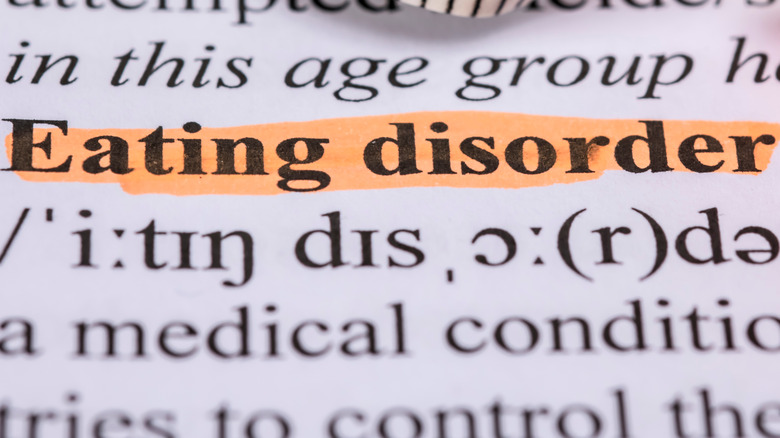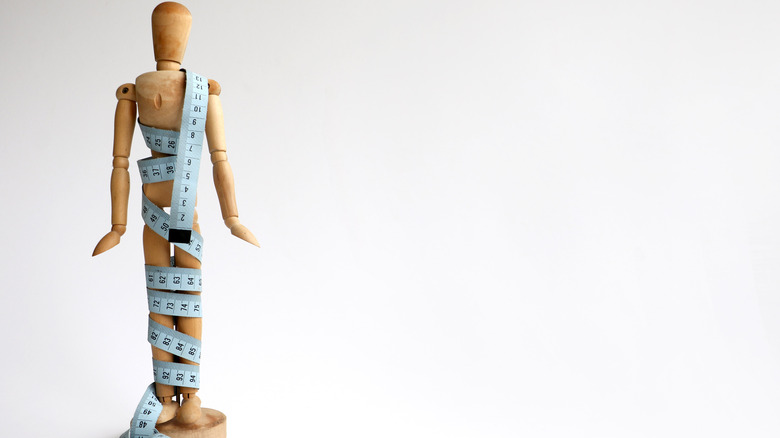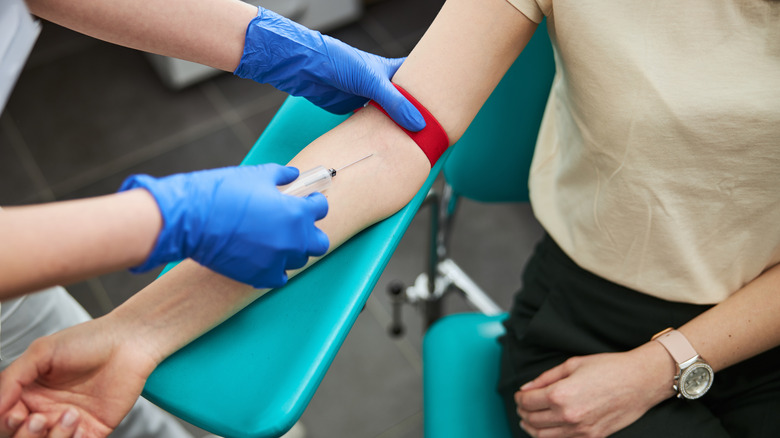Things You Might Not Know About Eating Disorders
According to the National Eating Disorders Association (NEDA), it is estimated that around 30 million people will experience an eating disorder at some point in their lives. However, they might not always be visible to the untrained eye. Eating disorders can affect people of any gender, age, sexual orientation, race, ethnic background, and religion.
According to the Center for Discovery, it is somewhat common to see anorexia nervosa portrayed in the media as an eating disorder rooted in a quest for perfection via starvation. In reality, there are many different types of eating disorders and just as many ways for them to manifest. They can affect anyone but eating disorders and can be deadly if left untreated.
If you are struggling with an eating disorder, or know someone who is, help is available. Visit the National Eating Disorders Association website or contact NEDA's Live Helpline at 1-800-931-2237. You can also receive 24/7 Crisis Support via text (send NEDA to 741-741).
What is an eating disorder?
Eating disorders are "mental and physical illnesses" that are treatable with the proper resources and attention, according to the National Eating Disorders Association. They are generally marked by atypical relationships with food and one's body shape (via Healthline). Some of the most common symptoms are a severe restriction of food, binging and purging, and over-exercising.
Anorexia nervosa is the most common eating disorder and affects young women more than other groups, according to Healthline. Anorexia is often characterized by extreme body dysmorphia and restriction of food. In recent years, anorexia has been divided into two subcategories: restrictive and binging and purging (via Healthline). Anorexia can lead to death when left untreated because the organ systems of the body begin to shut down when they have been deprived of nutrition, according to Healthline.
Bulimia is another common eating disorder that consists of regular binging and purging. It differs from binging-and-purging anorexia in that people with bulimia generally maintain a normal weight. Individuals with bulimia usually eat to the point of being painfully full and then go to extreme lengths (vomiting, employing enemas, taking diuretics or laxatives, or over-exercising) to rid their bodies of the food they consumed (via Healthline).
Other eating disorders include pica, or the eating of non-food substances, rumination disorder, and avoidant/restrictive food intake disorder, though they are less common, according to Healthline.
What causes eating disorders?
Scientists and researchers do not know the root cause of eating disorders; however, they know that a variety of factors are often at play. Some of these factors may be "biological, psychological, and sociocultural," according to National Eating Disorders Association. In some people, genetics and myriad personality traits seem to play a big role (via Healthline). Perfectionism, neuroticism, and impulsivity are common traits among people who develop eating disorders.
Other, less nuanced causes of eating disorders include the perceived pressure from the media to appear thin, perceived physical ideals, and cultural preference for thinness. According to Healthline, eating disorders are incredibly rare in countries that haven't been exposed to Western ideas of thinness and desirability. That said, Hollywood is not to entirely to blame for pushing the idea of thinness. The desire to be thin is, in fact, coveted in many places around the world (via Healthline).
Experts also believe serotonin and dopamine, two chemicals present in the brain, play a part in eating disorders. Because eating disorders are not caused by any one thing, they can be difficult to address (via Healthline).
Eating disorders within the LGBTQ+ community
Eating disorders disproportionately affect members of the LGBTQ+ community. According to the National Eating Disorders Association, "Research shows that, beginning as early as 12, gay, lesbian, and bisexual teens may be at higher risk of binge-eating and purging than heterosexual peers."
While belonging to this community does not inherently increase your chances of developing an eating disorder, some of the unique gender and identity struggles facing LGBTQ+ youth can tip the scales toward disordered eating, according to The Eating Disorder Foundation. Coming out and experiencing harassment can be heavy emotional and social burdens to bear. Additionally, ow self-esteem, anxiety, and trauma can all be factors that contribute to a person developing an eating disorder.
According to The Eating Disorder Foundation, many LGBTQ+ people may not feel they have a strong support system and thus delay treatment. Nevertheless, the organization asserts, "It is crucial that if someone within this community is struggling with an eating disorder, they seek professional help that is culturally competent."
Are eating disorders common?
According to data compiled in 2007, 0.3 to 0.4% of young women and 0.1% of young men will experience anorexia at some point in their lives (via National Eating Disorders Association). However, as the nebulous definition of what constitutes an eating disorder has changed and broadened in scope, more people fall into the disordered eating category. Additionally, more recent data found that out of nearly 500 adolescent girls, over 13% experienced an eating disorder by the age of 20, according to NEDA. As of August 2021, BetterHelp asserts that eating disorders may affect over 10% of the American population.
While untreated eating disorders can have severe consequences, according to NEDA, help is available. "Treatment for eating disorders usually involves a team of medical professionals and a support network of friends and family," BetterHelp explained. If you think you may have an eating disorder, consulting your primary care doctor is a great place to start.
Recognizing psychological symptoms of eating disorders
It is important to note that you cannot tell if someone is suffering from an eating disorder by simply looking at them. "Just as you can't say, 'Oh, that person's thin, they look like they have an eating disorder,' you can't say, 'That person's a healthy weight, so they don't have an eating disorder,'" Stephanie Zerwas, the clinical director of the UNC Center of Excellence for Eating Disorders, told Self. Diagnosing and treating an eating disorder is a complex process that should be left to professionals.
A few symptoms of eating disorders, in particular, should not be ignored. One of the most common psychological symptoms is "feeling 'out of control' around food," explained the National Eating Disorders Collaboration. However, the organization explained that "psychological warning signs can be difficult to detect in anyone suffering from an eating disorder. They usually only come to light through changes in behaviour or through discussion and conversation."
People with anorexia, in particular, may set specific rules surrounding food and their intake of it. Some common examples of this are refusing to eat entire categories of food, developing rituals surrounding food (like excessive chewing), and maintaining a rigid exercise and diet regimen despite illness or injury, according to the National Eating Disorders Association (NEDA).
Warning signs of eating disorders
Unusual behavior around food is often a recognizable sign of an eating disorder. Unfortunately, "unusual behavior around food" encompasses a large variety of behaviors that are tricky to nail down (via BetterHelp).
Skipping meals and making excuses about why is an oft-used tactic to disguise disordered eating. Overly restrictive diets can be a sign of an eating disorder as well. Veganism, and vegetarianism, for example, are all well and good when properly executed. However, some people struggling with eating disorders may develop excessive rigidity surrounding the food groups that they consume. Too much restriction can leave the individual malnourished, leading to further, more severe consequences (via BetterHelp).
Eating very little food is also a sign of an eating disorder that should not be ignored. People with eating disorders may poke at their food or push it around their plates to create the illusion of eating. Additionally, eating too much food in one sitting or eating in secret are two other red flags to be considered. While it is perfectly normal to overindulge on occasion, consistently practicing either behavior is cause for concern. Furthermore, "strange behavior" surrounding mealtimes — like repeatedly getting up to go to the bathroom — may be a warning sign as well, according to BetterHelp.
Binge eating is not just a sign of bulimia
Occasionally overeating Oreos while watching a Hallmark movie or your favorite TV show is not uncommon. In fact, it's pretty normal. However, regularly binging followed by purging is dangerous and a sign of bulimia (via WebMD). Frequently, people with bulimia feel out of control while they are binging and, according to Healthline, this usually occurs with food that the individual would typically avoid. "Individuals with bulimia then attempt to purge to compensate for the calories consumed and relieve gut discomfort," the site explained.
Not only can overeating to excess be a sign of bulimia, but it can also be a sign of other eating disorders, like binge eating disorder (via Healthline). Binge eating disorder differs from bulimia in that individuals with it do not purge after eating. Such ones may also "[eat] large amounts of foods rapidly, in secret and until uncomfortably full, despite not feeling hungry" according to Healthline.
A preoccupation with food is a sign of an eating disorder
A preoccupation with food, weight, or a militaristic rigidity surrounding food could be a sign of an eating disorder. The experts at BetterHelp urge you to keep an eye out for loved ones who exhibit such concerns around food.
Unlike other symptoms, a preoccupation with food could signify any of the many eating disorders. Sometimes this can present as someone bringing their own food to a social meal and refusing to eat the food served. However, this is not always a sign that something is amiss — it could very well mean that the individual has a food allergy or is on a doctor-prescribed diet (via BetterHelp).
A preoccupation with food and weight can also be spotted through consistent complaints about weight and body image. Again, some conversations about natural insecurities are not cause to sound the alarm. But when combined with other notable behaviors, this could be a sign of an underlying issue at play, according to BetterHelp.
If you are struggling with an eating disorder, or know someone who is, help is available. Visit the National Eating Disorders Association website or contact NEDA's Live Helpline at 1-800-931-2237. You can also receive 24/7 Crisis Support via text (send NEDA to 741-741).
Physical cues of eating disorders
Some of the physical signs of eating disorders can help you determine whether or not you or a loved one might need help. Of course, not all people with eating disorders exhibit the same symptoms, and many symptoms may not be present at all. But some of the symptoms may include GI issues, wild fluctuations in weight, menstrual irregularities, trouble sleeping, and abnormal lab results (e.g., low white and red blood cell counts), according to the National Eating Disorders Association (NEDA).
Outwardly, a person with an eating disorder may have soft, fine hair across their bodies, dry skin and hair, and dental problems. People with bulimia are specifically at risk for yellowed, eroded teeth and cuts and scrapes on their hands due to regularly inducing vomiting (via NEDA).
Other signs may include dizziness upon standing, feeling cold all of the time, muscle weakness, poor wound healing, and degraded immune function. Over time, many of these symptoms can become catastrophic if left untreated, per NEDA.
Subtle mental and emotional cues are often present
The mental and emotional components of eating disorders run deeper than even the leading experts fully understand. Some of the emotional and behavioral symptoms of eating disorders are subtle, which makes them difficult to spot when viewed individually. Collectively, though, these symptoms paint a clearer picture.
According to the National Eating Disorders Association (NEDA), Some people with eating disorders may engage in frequent, intense dieting. They may also withdraw from friends and activities and have extreme mood swings. People who have compulsive exercise disorders can experience a range of negative emotions and moods when they cannot work out. They might feel intensely anxious or depressed when unable to exercise. They may also force themselves to work out despite illness and injuries.
A person with an eating disorder may also frequently check their reflection in mirrors, incessantly talk about their body and diet, and ultimately show extreme concern over their body shape and size, explained NEDA.
Compulsive exercise is not an eating disorder, but it can be a sign of one
Much the same way Hollywood has romanticized eating disorders, social media has glamorized compulsive exercise. While compulsive exercise is not a clinically recognized eating disorder, it can often be a notable expression that can help outsiders spot an eating disorder in a loved one (via National Eating Disorders Association).
Oftentimes, people who compulsively exercise opt to exercise at the expense of other important engagements. People suffering from this often use exercise as a way to rationalize their eating. They use it as a way to "burn off" what they have consumed and to earn their permission to eat more, according to NEDA.
While exercise is a healthy activity, excessive exercise can have dire consequences. Compulsive exercisers may experience chronically sore muscles, joint and bone pain, altered resting heart rate, and increased incidence of injury (via NEDA). Beneath the surface, compulsive exercise can lead to osteoporosis, a loss of menstrual cycle in women, and an increased incidence of illnesses and upper respiratory infections.
Resources are available
Anorexia nervosa has the highest mortality rate of all mental illnesses, according to Eating Disorder Hope. Although this is a sobering statistic, treatment is available. The National Eating Disorders Association's website offers a search tool in which you can anonymously access vital resources near you. Additionally, the website features a free screening tool, which is "appropriate for ages 13 and up" and "can help determine if it's time to seek professional help."
If you are attempting to navigate your way through an eating disorder, please know that you are not alone. Though it may seem impossible, there is plentiful evidence that proves recovery is possible and worth it (via The Eating Disorder Foundation).
If you are struggling with an eating disorder, or know someone who is, help is available. Visit the National Eating Disorders Association website or contact NEDA's Live Helpline at 1-800-931-2237. You can also receive 24/7 Crisis Support via text (send NEDA to 741-741).













